
Naturally Antimicrobial Surfaces: What You Need to Know
Last Updated: Feb 11, 2025During the past year, you've likely purchased more bleach, hand sanitizer, soap, and other disinfecting agents than ever before. The COVID-19 pandemic indeed increased our awareness of the microbial bacteria and viruses with whom we share our spaces. Keeping our homes, workplaces, and other areas free from viruses and other pathogens that can cause disease is essential. However, several different negative consequences come with over-using strong disinfectants, such as bleach. Today's article will take a quick look at some of the primary, adverse health and environmental effects of over-using strong disinfectants in our home. We will then turn our attention to naturally antimicrobial surfaces. We will explore how these products might help reduce our dependence and reliance on strong chemical disinfectants.
Table of Contents
- What Are the Dangers of Bleach and Other Disinfecting Products?
- What are the Dangers of Conventional Antibacterial Products?
- What are the Truth and Myths of Naturally Antimicrobial Surfaces?
- What Are Antimicrobial Surfaces?
- What Are Naturally Antimicrobial Surfaces?
- What Products Incorporate Naturally Antimicrobial Surfaces?
- How to Avoid False Advertising of Antimicrobial Surfaces

What Are the Dangers of Bleach and Other Disinfecting Products?
Bleach is one of the most commonly used household cleaning agents. Indeed, many homeowners associate the smell of bleach with a clean, hygienic home, especially during the winter flu season. Though bleach can quickly kill and eliminate 99.9% of all bacteria, viruses, and other pathogens, it also kills every other microorganism that it comes into contact with.
Most of us have been taught, unfortunately, to believe that bacteria and other microorganisms are harmful. Though some organisms are certainly pathogenic, there is an enormous body of scientific research looking at the importance of the microbiota in our guts and in the places we live. Using large amounts of bleach and other strong disinfectants virtually eliminates the healthy bacteria that promote holistic health. One study even found that there might be a connection between the generous use of household chemical disinfectants and childhood obesity rates.
The use of bleach in the home can also negatively affect indoor air quality. This is especially true if bleach products come into contact with ammonia, a common ingredient in other cleaning products. For this reason, you should never mix bleach with any other type of cleaner. Because the smell of bleach is considered unpleasant by some people, many companies combine bleach with a citrus compound known as limonene. This common volatile organic compound (VOC) has been shown to oxidize in the air and lead to skin allergies.
In the broader environment, bleach can break down into dioxins, furans, and PCDDs, all of which are known as "persistent organic pollutants." These are chemical pollutants that linger in ecosystems for long periods -causing damage to both flora and fauna. Dioxins from bleach have also been linked to cancer, endocrine disorders, and other serious health effects.

What are the Truth and Myths of Naturally Antimicrobial Surfaces?
With the ongoing threat of COVID-19 still lingering, keeping our homes protected from COVID-19 and other pathogens should be a high priority for every homeowner. However, might there exist a genuinely compelling alternative to bleach and other strong, chemical antibacterial cleaning products that are healthier for our bodies and the natural environment? Natural antimicrobial surfaces offer another, potentially healthier alternative. These options can help keep our home clean, hygienic, and protected from viruses, bacteria, and other harmful pathogens without contributing to the problems we outlined above.
What Are Antimicrobial Surfaces?
Antimicrobial surfaces are usually defined as the "impregnation of materials with biocides that are released into the surroundings at which point microbes are killed." In hospital settings, antimicrobial surfaces have been in use for several decades as a strategy to sterilize medical devices to prevent hospital-associated infections. A robust chemical biocide coating is often used to eliminate pathogenic microorganisms in these healthcare settings. Recently, however, researchers have been looking at the possibility of creating naturally antimicrobial surfaces through changing their micro and nanostructure.
What Products Incorporate Naturally Antimicrobial Surfaces?
So what types of materials offer natural antimicrobial protection for our homes - without incorporating strong antibacterial elements that can contribute to the rise of superbugs?
- Copper, Brass, and Bronze (copper alloys)
- Quartz
- Siver
- Cork
Below, we look at these leading options available to homeowners.
Copper (and Brass and Bronze)
As we mentioned above, copper is an element that has natural antimicrobial properties. On a molecular level, copper affects the membrane integrity of microbes, essentially leading to cell death. For this reason, copper door handles and knobs are a great choice to keep your home protected. Although pricy, you can also opt for copper countertops that will also age beautifully with time. Copper alloys such as brass and bronze also offer antimicrobial protection.
Money Saving Home Improvement Products
Shop home improvement products that directly contribute to saving money through their use, whether through energy savings or lower maintenance costs.
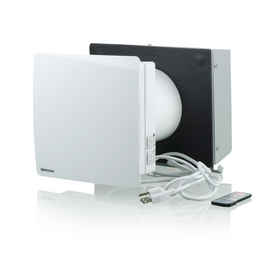
Vents TwinFresh Comfo RA1-50-2 Ductless Energy Recovery Ventilator
Vents
In Stock
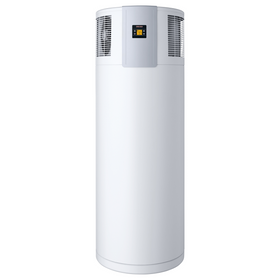
Stiebel Eltron Accelera 300 E Heat Pump Water Heater
Stiebel Eltron
Out of Stock
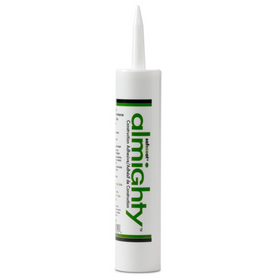
AFM Safecoat Almighty Adhesive Case of 12
AFM Safecoat
In Stock

Emporia Classic Level 2 48 AMP EV Charger UL Listed
Emporia
In Stock
2 Colors

Stiebel Eltron CON 300-2 Premium Wall-Mounted Convection Heater - 202030
Stiebel Eltron
Out of Stock
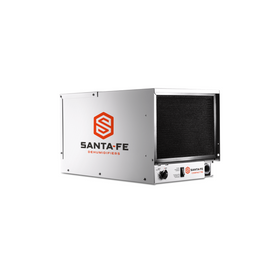
Santa Fe Compact70 Dehumidifier - 4044110
Santa Fe
In Stock
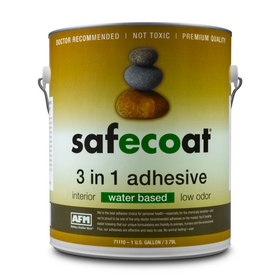
AFM Safecoat 3 in 1 Adhesive
AFM Safecoat
In Stock
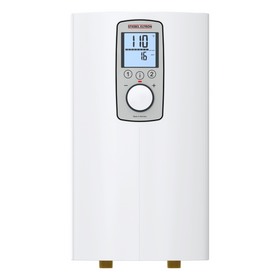
Stiebel Eltron DHC-E 8/10-2 Plus Point-of-Use Electric Tankless Water Heater - 202145
Stiebel Eltron
In Stock
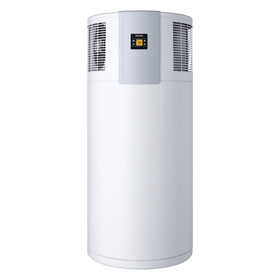
Stiebel Eltron Accelera 220 E Heat Pump Water Heater
Stiebel Eltron
In Stock

Stiebel Eltron CON 150-1 Premium Wall-Mounted Convection Heater - 202026
Stiebel Eltron
In Stock
Quartz
Quartz is one of the most popular options for kitchen countertops, and for a good reason. Besides its superior aesthetic qualities, quartz is also one of the hardest, non-precious stones. This property means that your quartz countertop is exceptionally resistant to scratches. Pathogens such as bacteria and viruses need a place to live and reproduce. Small scratches or abrasions on a surface allow them a habitat to reproduce. Because quartz is so hard, it virtually eliminates any "habitat" for bacteria or other pathogens to thrive. By thoroughly cleaning up your countertop regularly with warm, soapy water, you are essentially maintaining a naturally antimicrobial surface.
Silver
Obviously, coating your entire home in silver will come with a high price tag. However, silver is widely recognized as one of the best naturally antimicrobial surfaces. The positively charged silver ions can kill bacteria, fungi, and certain viruses. Coatings that incorporate silver ions, then, have the ability to offer naturally antimicrobial surfaces. Check out this kitchen that is essentially "bathed" in a silver coating to naturally protect against a wide range of pathogens.

Cork
Cork flooring also offers a certain degree of natural antimicrobial properties. Suberin is a wax-like element that naturally exists within cork, and studies have shown that suberin exhibits bactericidal properties. It does need resealing periodically, however, to maintain its antimicrobial properties.
How to Avoid False Advertising of Antimicrobial Surfaces
Despite the advances in developing new types of naturally antimicrobial surfaces, many companies make false or misleading product claims. The growing consumer demand for healthier alternatives to strong chemical disinfectants has created a market opportunity that many companies are looking to exploit. For example, one recent study found that wooden cutting boards did offer some level of antimicrobial prevention. However, claiming that all wood surfaces offer significant naturally antimicrobial properties would certainly be a stretch.
Again, it is worth stating that there is a significant, fundamental difference between "naturally antimicrobial surfaces" and "antibacterial" surfaces. When searching for natural antimicrobial surfaces, look for products that contain quartz, copper (and its alloys), silver, cork, and other similar products.

As with any aspect of choosing the best materials for a healthy and sustainable home, reading or researching the ingredients is probably your best bet before purchasing and using. In general, consider staying away from any product listed as antibacterial, and search for products that incorporate the elements and materials we discussed above.
Tobias Roberts
Tobias runs an agroecology farm and a natural building collective in the mountains of El Salvador. He specializes in earthen construction methods and uses permaculture design methods to integrate structures into the sustainability of the landscape.






